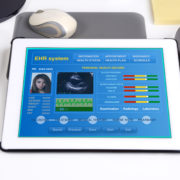Best Practices to Improve Patient Payment Compliance in Your Orthopaedic Practice
For your orthopaedic practice, the patient portion of payments has increasingly become a key concern for the health of your revenue cycle management. According to studies cited by Becker’s Hospital Review, 74 percent of providers surveyed reported an increase in patient payment responsibility. A whopping 90 percent of patients indicated that they need to know their own portion of medical bills in advance. For patients, the increase in cost has been dramatic. For your orthopaedic practice, it’s resulted in a need to massively retool the way that your billing cycle is handled.
Patients don’t traditionally pay as quickly or reliably as government agencies or insurance companies. In fact, patient payments average 60 days or more, putting some strain your practice’s ability to thrive financially. Viewing the patient as a healthcare consumer has created the best possible scenario for both patient retention and improved payment management.
For your practice to best serve patients and improve the payment process, it’s helpful to keep in mind the financial pressures patients face with regard to any form of healthcare. In general, most patients find billing confusing. Because their out of pocket cost is increasingly more expensive, they need information on what their payment responsibilities will be in order to budget costs. It helps to keep in mind that most patients want to pay their bills on time and work with your practice. It’s often a matter of making their experience more understandable and easier for them to navigate.
Best Practices for Patient Payment Compliance
For your orthopaedic practice to thrive financially, it’s clear that patient payments need to be a priority. The following practices can help your orthopaedic practice to decrease the amount of time from point of service to patient payment as well as alleviating non-payment situations.
- Verify Patient Coverage. If your practice doesn’t verify the patient’s coverage prior to their initial visit, you should. This step is easy and affordable and will allow you to better serve the patient because your practice will be better prepared to counsel them on their initial and ongoing financial responsibilities with regard to their treatment.
- Billing Education. Many patients find healthcare billing difficult to understand. For your practice, it’s important that patients have access to as much information as possible so that they feel comfortable with the billing process. This might mean simplifying your own billing statements or scheduling set conferences with a staff member for new patients.
- Patient Payment Agreements. Your practice might consider working with new patients to set up patient payment agreements so that the patient has a set schedule of payment to follow for their treatment.
- Card on File. A card on file system allows your practice to keep the credit card information for your patient. A good system will allow you to keep this information encrypted and secure so that the patient payment can be automatically deducted at the time of service or on a scheduled billing cycle.
There are a number of ways your practice can streamline the payment process for patients. If your practice is seeing a decline in patient payments or longer time frames with outstanding patient payments, instituting some new patient protocols can be an easy and affordable way to better serve the patient and the practice.











